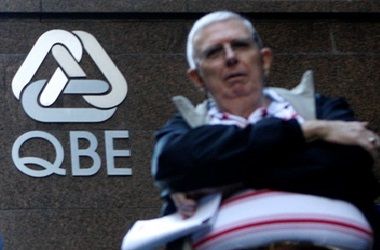The Sydney-based insurer began marketing the 30-year non-call 10-year issue with guidance of 7% area, although this was refined to 6.875% area on books approaching US$2bn.
Under the terms of the deal, QBE would have to irrevocably convert or write-off some or all of the bonds into ordinary shares if it runs into trouble, a provision required by the Australian regulator as part of its harmonisation of rules between the banking and insurance sectors.
“This is quite aggressive, more so than recent insurance deals from European issuers,” said a DCM banker.
“We haven’t seen this before on an insurance deal – it harks straight from the Australian regulator. There is no requirement in Europe to do this.”
The non-viability trigger is a “gone concern” trigger meaning that the company essentially needs to be out of business before it comes into play.
As of 30 June 2014, QBE’s premium solvency ratio – calculated as the ratio of net tangible assets to annualised net earned premium – was 45% compared with 38.5% as at December 31 2013 and 35.5% as at 30 June 2013.
QBE’s indicative CET1 ratio was 119%, up from 114% at December 31 2013 and nearly double APRA’s 60% minimum requirement.
While contractual loss-absorption at the point of non-viability is now employed frequently in the Australian domestic market, it is a new idea for many investors in Europe which necessitated a considerable amount of education during the roadshow.
“This is the new world of capital,” said one DCM banker. “Investors have to get used to it.”
Earlier this month, National Australia Bank priced the first euro Basel III compliant Tier 2 bond that included contractual loss-absorption language and had to offer a hefty premium versus its European peers that only have to have loss-absorption on a statutory basis.
Leads on the QBE deal also anticipated having to factor in both a new issue premium and a premium to account for the non-viability trigger and the contractual nature of the language.
For a starting point, leads looked to QBE’s dual-currency 30-year non-call 10 Tier 2 issued in May 2011, of which the GBP325m 7.5% tranche is now quoted at swaps plus 343bp and the US$1bn 144A/Reg S tranche is at plus 353bp.
Leads added in around 30bp to account for the non-viability trigger, equating to a yield in the mid to high 6% area, with an additional new issue premium topping it up to IPTs of 7% area.
By mid-morning books had exceeded US$1bn. By the final update books had exceeded US$2bn for a US$700m print, with the deal set to price at 6.875%, +/- an eighth.
Leads were optimistic about the market despite some challenging conditions in the Tier 2 sector recently. NBA’s EU750m Tier 2 priced in early November at swaps plus 165bp, but has since widened by 20bp.
“The market feels better this morning,” said a syndicate banker. “The Chinese rate cut came after hours on Friday, and helped the market this morning. Asia markets are all looking positive.”
“It does what they need in terms of raising capital, and gives investors what they want,” said a lead.
QBE announced in August that it would be raising Tier 2 debt, which would be use to repay bank loans and US$400m of senior debt.
